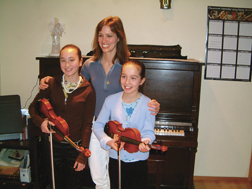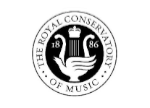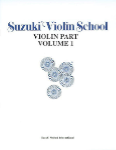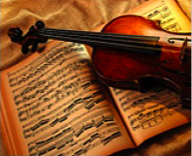the Violin Studio
A place to pursue your musical aspirations…
Violin lessons (in English or French) are offered by Suzanne Young, who is an accomplished violin instructor with extensive experience teaching various methodologies in respected music schools. This experience has helped her develop a unique and highly effective teaching style that is customizable based on the student’s age, level and musical goals.
Suzanne’s musical career as a soloist and member of major symphony orchestras, chamber groups and eclectic groups, allows her to authentically teach virtually any style of music that interests her student. Suzanne enjoys teaching anyone with the desire to learn whether they be a child or adult, a first time violinist or a professional.
Suzanne’s musical career as a soloist and member of major symphony orchestras, chamber groups and eclectic groups, allows her to authentically teach virtually any style of music that interests her student. Suzanne enjoys teaching anyone with the desire to learn whether they be a child or adult, a first time violinist or a professional.

In addition to her uniquely tailored teaching style, Suzanne combines both of the two traditional (and still popular) approaches to learning the instrument: The Suzuki Method and RCM System. Suzanne's experience ensures the student receives the best of both methods to address the fundamental techniques required to play the violin proficiently. The first step in determining whether lessons are suited for you or your child is to send us an email to set up a free consultation with Suzanne. In this session, Suzanne will discuss her methodology in the context of your musical goals and answer any questions you might have.

The Royal Conservatory of Music (RCM) is an internationally renowned institution recognized for its high teaching standards, performance and examination system as well as research and publishing. The system provides students with goals and graded examinations. These examinations provide the student with progressive practical (technical and musical) and theoretical knowledge goals.
Following the RCM graded system can be quite helpful for students who work better with a deadline to meet. It provides the student with certificates and diplomas and can be counted towards high school credits. The RCM method is one of several available tools to provide students with progressive learning steps and goals. The student may wish to follow a variation of the strict RCM method depending on their learning style and musical interests. Ultimately, each student should be involved in the process of creating his or her own goals with the guidance of an experienced teacher.

The Suzuki Method is a methodology based on the theory that every child has the ability to learn and that learning a musical instrument is comparable to that of a child learning his/her mother tongue. Parents are urged to learn the instrument along with their child who in turn, inspired by mom or dad; is encouraged by watching, listening, and imitating. The method puts emphasis on learning repertoire through listening and repetition and consequently delays the reading of music. This methodology can be complemented by others methodologies to suit students’ individual needs and learning patterns.

Here are a few points on the violin for those considering playing this magnificent instrument. The violin, which is more informally known as a “fiddle”, comes from the family of string instruments. Having four strings each tuned a fifth apart, the violin is the smallest and highest pitched instrument in the string family. It is a bowed instrument but can also be plucked. Its origins date back to before the 16th century, but it was really during that time that the modern version we see and hear today appeared. The violin is a beautiful sounding instrument when played well, but like most instruments, it takes hard work and dedication to bring the most out of the instrument and make it sing. For more information on the violin you may wish to visit an interesting website called: The Violin.
The art of playing the violin entails mastering many different aspects such as tone production, intonation, musical expression, color, dynamics, interpretation and style. It is therefore crucial that the player learn the proper physical “set up” and fundamental technique of the instrument. It can be confusing to watch different violinists play, as they all look and play a little differently. In the beginning the basics should be learned and then can be altered somewhat if desired. Every player settles into his or her own style of playing. Sometimes altering the age-old techniques can produce tension and other problems in the player. Although the violin may appear to be unnatural looking when played by a beginner, it can become almost like an extension of the body and one of the most natural feeling instruments for the advanced player. The transition from beginner to expert takes time and effort but it is most certainly worth it!
The violin itself rests between the shoulder (head weight) and left hand. The fingers stop the strings at different points on the fingerboard changing the length of the vibrating string, sounding out different pitches. The bow on the other hand is held in the right hand, hugging the frog between the fingers and thumb. The bow is then drawn across the strings at different contact points and speeds. The weight of the bow on the string is extremely important; too much pressure can create a crunchy sound while holding the bow with insufficient weight creates a fluffy sound. Like most things in life playing the violin is about balance.
Some of the great classical violin masters from the past include Jascha Heifetz, Josef Gingold, David Oistrakh and Yehudi Menuhin just to name a few. Let us not forget jazz violinists Stephane Grappelli and Joe Venuti. Some well known modern day classical players inclde; Itzhak Perlman, Anne Sophie Mutter, Joshua Bell or jazz violinists Regina Carter and John-Luc Ponty or Canadian folk violinists Natalie MacMaster, Ashley MacIsaac and Jonathan Moorman. The importance of listening to such violinists when learning to play the instrument is invaluable.
▾
▾